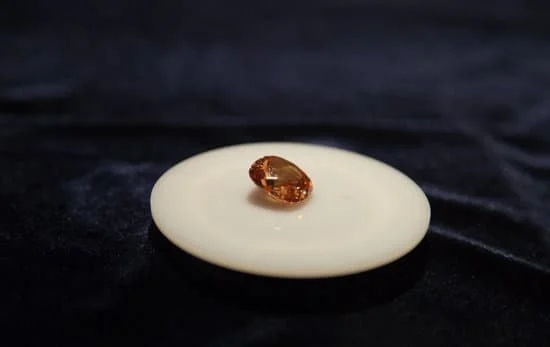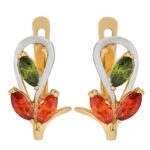Are you wondering how much to charge for beaded jewelry? Setting the right price for your handmade pieces is essential for the success of your beading business. Whether you are just starting out or have been selling beaded jewelry for a while, understanding the factors that go into pricing and developing a consistent pricing structure is key to attracting customers and making a profit.
When it comes to pricing beaded jewelry, there are several important factors to consider. From the cost of materials and labor to researching the market and competition, finding the right balance between affordability and profitability can be a challenge. In this article, we will explore these factors in depth and provide tips for setting the right price for your unique creations.
In addition to understanding the cost of materials and labor, it is also crucial to research the market and competition when pricing beaded jewelry. By knowing what similar products are being sold for, you can ensure that your prices are competitive while still allowing for a reasonable profit margin. We will discuss effective strategies for researching the market and adjusting prices accordingly.
Factors to Consider When Pricing Beaded Jewelry
When it comes to pricing beaded jewelry, there are several factors that artisans and sellers need to take into consideration in order to determine the right price for their products. One of the most important factors to consider is the cost of materials and labor.
This includes not only the price of the beads themselves, but also any other materials used in the piece, such as wire, clasps, or findings. Additionally, artisans need to factor in the time it takes to create each piece, as well as any specialized skills or techniques that may have been used.
Another important consideration when pricing beaded jewelry is researching the market and competition. It’s essential to have a good understanding of what similar pieces are selling for in order to remain competitive. Sellers should take note of both online and offline marketplaces where their target customers are likely to be shopping for jewelry. This research can provide valuable insight into what price points are most attractive to potential buyers.
In addition to considering the cost of materials and market research, calculating overhead and profit margin is crucial when determining how much to charge for beaded jewelry. Overhead costs such as rent for a studio space, utilities, marketing expenses, and packaging materials all need to be factored into the final price of each piece.
Sellers also need to decide on a reasonable profit margin that will allow them not only cover their costs but also generate income from their business efforts.
| Factors Consideration | Description |
|---|---|
| Cost of Materials and Labor | Includes price of beads, other materials used, time spent creating each piece, and any specialized skills or techniques required. |
| Market Research and Competition | Understanding what similar pieces are selling for helps determine competitive pricing for beaded jewelry. |
| Overhead Costs and Profit Margin | Factoring in costs like rent, utilities, marketing expenses plus deciding on a reasonable profit margin is crucial when setting prices. |
Understanding the Cost of Materials and Labor
When it comes to pricing beaded jewelry, understanding the cost of materials and labor is crucial. The cost of materials includes the beads, findings, wire, stringing material, and any other components used to create the jewelry piece. This cost can vary depending on the quality and type of materials used.
Additionally, factoring in the cost of labor is essential. Consider how much time it takes to design and create each piece, as well as any additional expenses such as tools or equipment.
To accurately determine the cost of materials and labor for your beaded jewelry, it’s important to keep track of all your expenses. This means keeping detailed records of every material purchased, as well as tracking the time spent on each piece. By understanding these costs, you can ensure that you are not underpricing your creations.
Many jewelry makers struggle with determining how much to charge for beaded jewelry because they overlook the true cost of materials and labor. However, by taking the time to calculate these expenses, you can set a fair price that reflects the value of your work while also being competitive in the market. Understanding the cost of materials and labor is a crucial step in setting the right price for your beaded jewelry pieces.
Researching the Market and Competition
When it comes to pricing your beaded jewelry, one key aspect to consider is the market and your competition. Researching the market and understanding what other jewelry makers are charging for similar products can provide valuable insights into how to price your own creations competitively.
Market Research
Conducting market research involves looking at the prices of similar beaded jewelry in both physical retail stores and online marketplaces. Take note of the materials used, the quality of workmanship, and any unique selling points that set these pieces apart. By evaluating a wide range of products, you can gain a better understanding of the price ranges for different types of beaded jewelry.
Competitive Analysis
Alongside market research, it’s also important to assess your direct competitors and their pricing strategies. Look at how established and successful jewelry makers price their products. This can give you an idea of where you stand in relation to the competition and help you identify opportunities to differentiate your offerings in terms of both product quality and pricing.
Customer Perception
Furthermore, understanding customer perception of pricing within the beaded jewelry market is crucial. Pay attention to reviews and feedback from customers regarding pricing, as this can provide valuable insights into how much they are willing to pay for certain types of beaded jewelry. Additionally, consider factors such as brand reputation and perceived value when determining how much to charge for your creations.
By thoroughly researching the market and analyzing your competition, you can gain a clearer understanding of how much to charge for your beaded jewelry in order to remain competitive while still making a profit.
Calculating Overhead and Profit Margin
When determining how much to charge for beaded jewelry, it’s essential to consider the overhead costs and profit margin. Overhead costs include all the expenses incurred in running your jewelry business, such as rent, utilities, packaging materials, advertising, and other miscellaneous expenses. Calculating the overhead will help you understand how much revenue you need to generate to cover these costs and make a profit.
To calculate your overhead costs, start by making a list of all your business expenses. This can include both fixed costs (e.g. rent) and variable costs (e.g. packaging materials). Once you have a total monthly overhead cost, you can divide this by the number of pieces of jewelry you expect to sell in a month to determine how much of the overhead cost should be allocated to each piece.
After understanding your overhead costs, it’s crucial to consider the profit margin when pricing your beaded jewelry. The profit margin is the amount by which revenue from sales exceeds costs in a business. It’s important to set a reasonable profit margin that allows you to make a profit while remaining competitive in the market. Typically, a 50% markup on materials is standard practice but could vary depending on other factors such as exclusivity and demand.
When calculating your prices for beaded jewelry, don’t forget to weigh into consideration your time spent creating each piece. Labor cost also affects how much to charge for beaded jewelry as they are integral in determining an overall price for each piece of custom-made jewelry items made.
Remember that setting prices too low may mean not covering your expenses while setting them too high may drive customers away. Balancing all these factors will ensure that you set fair prices that allow you to sustainably operate your business while maintaining profitability.
Pricing Strategies for Different Types of Beaded Jewelry
When it comes to pricing beaded jewelry, it’s important to consider the various types of jewelry you offer and how to strategically price them. Different types of beaded jewelry may require different pricing strategies in order to maximize profitability and appeal to your target market. Here are some key pricing strategies for different types of beaded jewelry:
1. Bracelets and Anklets: For these smaller items, a good strategy is to price them based on the cost of materials and labor, plus a markup for profit. Consider the complexity of the design and the type of beads used when determining the final price.
2. Necklaces and Chokers: These larger pieces often require more materials and labor, so a pricing strategy that includes a higher markup for profit is common. Keep in mind that certain types of beads or precious stones may warrant an even higher selling price.
3. Earrings: Earrings can vary widely in terms of size and intricacy, so consider categorizing them into different price points based on their complexity. Simple stud earrings may be priced lower than statement chandelier earrings, for example.
It’s important to remember that customers are willing to pay more for unique or custom pieces, so consider having a separate pricing strategy for custom orders and special requests. By offering customization options at an additional cost, you can appeal to customers looking for one-of-a-kind beaded jewelry.
| Types of Beaded Jewelry | Price Range |
|---|---|
| Bracelets/Anklets | $15 – $50 |
| Necklaces/Chokers | $25 – $100+ |
| Earrings | $10 – $40 |
Adjusting Prices for Custom Orders and Special Requests
When it comes to pricing beaded jewelry, custom orders and special requests can often present a challenge. These types of orders require additional time and effort, as well as unique materials that may not be readily available. As a result, it is important for jewelry makers to adjust their prices accordingly in order to ensure fair compensation for their work.
Consider the Time and Materials
When fulfilling custom orders or special requests, it’s important to carefully consider the amount of time and the cost of materials required to complete the project. Factor in any additional labor or design work that goes into creating the piece, as well as any specialty beads or materials that may need to be sourced specifically for the order. All of these elements should be taken into account when determining the final price for the custom piece.
Communicate With the Customer
It’s essential to have open communication with the customer when working on a custom order or special request. Discuss their specific requirements and preferences, and provide them with an estimate for how much their unique piece will cost. Be transparent about any additional fees or charges that may apply due to the custom nature of their order, and ensure that they understand why the price may differ from your standard pricing.
Factor in Your Expertise
Remember to factor in your expertise and skill when adjusting prices for custom orders. If a customer is requesting a highly intricate design or specialized technique that requires advanced knowledge and experience, this should be reflected in the final price.
Your expertise is valuable, so don’t hesitate to charge accordingly for the level of craftsmanship and individualized attention that goes into creating custom pieces. By considering all of these elements, you can ensure that you’re setting fair prices for custom orders and special requests while also maintaining profitability for your jewelry business.
The Importance of Setting a Consistent Pricing Structure
Setting a consistent pricing structure for your beaded jewelry is crucial for the success of your business. It not only helps you maintain a professional image, but it also builds trust with your customers. Consistency in pricing shows that you are fair and transparent, which can lead to repeat business and loyal customers. Here are some tips for setting a consistent pricing structure:
- Standardize your pricing: Create a standard pricing list for all your beaded jewelry pieces, whether it’s bracelets, necklaces, or earrings. This makes it easier for both you and your customers to know what to expect.
- Factor in labor and materials: Be sure to include the cost of materials and the time it takes to make each piece when setting your prices. This ensures that you are covering your costs while also making a profit.
- Consider market research: Look into what similar beaded jewelry is being sold for in the market and by your competitors. This will help you determine if your prices are competitive and where they should be set.
Additionally, having a consistent pricing structure makes it easier for you to handle custom orders and special requests. When customers know what to expect in terms of pricing, they are more likely to feel comfortable placing custom orders and willing to pay how much is fair for their specific request.
By setting a consistent pricing structure, you are not only providing transparency and fairness to your customers but also creating a strong foundation for the success of your beaded jewelry business.
Conclusion
Setting the right price for your beaded jewelry is crucial to the success of your business. Understanding how much to charge for beaded jewelry requires careful consideration of various factors, including the cost of materials and labor, market research, overhead expenses, and profit margin. By taking all of these elements into account, you can ensure that your pricing is fair to both you as the maker and your customers.
It’s important to remember that pricing strategies may vary depending on the type of beaded jewelry you are selling. For example, delicate and intricate designs may require a higher price point compared to simpler pieces. Custom orders and special requests should also be priced accordingly, taking into consideration any additional time and materials required. By adapting your pricing strategies to different types of jewelry and customer needs, you can maximize your earning potential while providing value to your customers.
In setting a consistent pricing structure for your beaded jewelry, consider the long-term sustainability of your business. While it can be tempting to underprice in order to attract more customers, this may not be sustainable in the long run. Instead, aim for a balance between competitiveness and profitability. By following these tips and carefully evaluating each aspect of pricing, you can confidently set the right price for your beaded jewelry business.
Frequently Asked Questions
Can You Make Money Selling Beaded Jewelry?
Yes, it is possible to make money selling beaded jewelry. Many people are willing to pay for unique and well-crafted beaded jewelry, especially if it’s handmade and of high quality. Success in selling beaded jewelry often depends on finding the right market and understanding what customers are looking for.
Do Beaded Bracelets Sell Well?
Beaded bracelets can sell very well, especially if they have a trendy or unique design. The demand for beaded bracelets often depends on current fashion trends and customer preferences. It’s important to do some market research to understand what styles are currently popular and which target audience would be interested in buying them.
How Profitable Is Bead Making?
Bead making can be profitable, especially for those who have a talent for creating intricate and appealing designs. However, like any business, profitability depends on factors such as the cost of materials, labor, marketing efforts, and the ability to price items competitively while still turning a profit.
It’s important to factor in all costs when evaluating the profitability of bead making as a business venture.

Welcome to my jewelry blog! My name is Sarah and I am the owner of this blog.
I love making jewelry and sharing my creations with others.
So whether you’re someone who loves wearing jewelry yourself or simply enjoys learning about it, be sure to check out my blog for insightful posts on everything related to this exciting topic!





